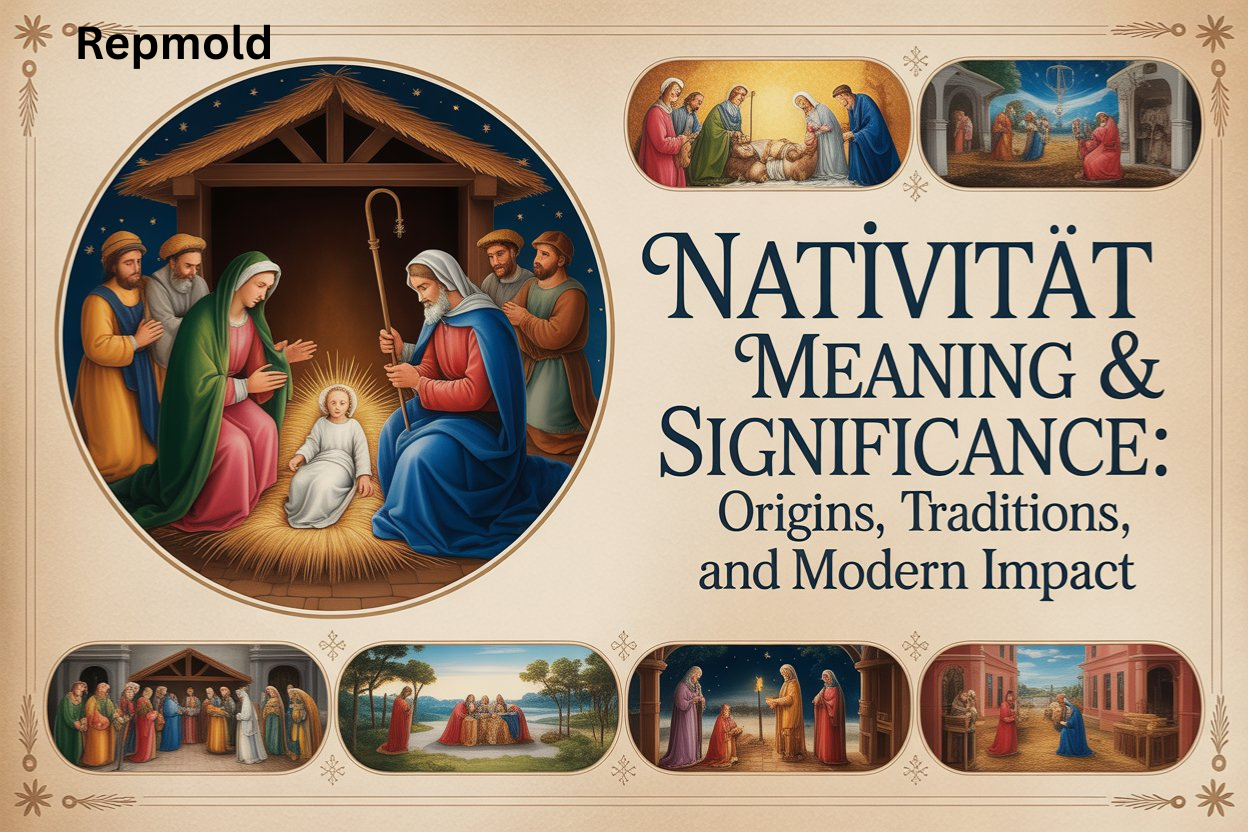Introduction
The term Nativität comes from the Latin word nativitas, meaning “birth” or “origin.” It represents beginnings, creation, and the start of something new. While commonly associated with the Nativity of Jesus, Nativität has broader meanings in culture, art, and philosophy.
In religion, it symbolizes hope, divine love, and spiritual renewal. Artists and writers have long celebrated Nativität through paintings, literature, music, and sculptures. Across cultures, it reflects community traditions, festive rituals, and moral lessons. Even astrology uses Nativität to describe birth charts, linking human life to cosmic patterns.
Understanding Nativität today matters because it connects past and present. It reminds us of the value of new beginnings, personal growth, and cultural heritage. By exploring Nativität, readers can appreciate both its spiritual depth and its universal relevance in modern life.
What Is Nativität?
Nativität is a German word derived from the Latin nativitas, which means “birth” or “origin.” It signifies the beginning of life, creation, or a new journey. Over time, the term has grown to include spiritual, cultural, and symbolic meanings beyond its literal sense.
While closely related, Nativität differs from the English word Nativity. Nativity usually refers specifically to the birth of Jesus Christ. In contrast, Nativität can describe any significant beginning, whether it is the birth of a child, the start of an idea, or a creative project. This broader use gives the word flexibility in both religious and secular contexts.
Symbolically, Nativität represents hope, renewal, and fresh starts. It encourages reflection on new opportunities, personal growth, and life’s transformative moments. By understanding Nativität, we can appreciate the universal value of every beginning and its lasting impact on culture, art, and human experience.
Historical Origins of Nativität
The concept of Nativität dates back to early Christian traditions. It primarily refers to the birth of Jesus Christ in Bethlehem. This event symbolized hope, divine presence, and the beginning of salvation for believers.
Over the centuries, the celebration of Nativität spread across Europe. By the 4th century, December 25th was chosen as the official date for Christmas. This date replaced some pagan winter festivals, blending religious meaning with local customs. Communities began organizing feasts, prayers, and special gatherings to honor the sacred birth.
Artists and writers soon embraced Nativität in their work. Medieval altarpieces, Renaissance paintings, and Baroque sculptures depicted Mary, Joseph, and baby Jesus with reverence. Literature, hymns, and carols also celebrated the story, inspiring devotion and reflection. In time, Nativität became a symbol not only of faith but of cultural identity, linking generations through shared traditions.
Symbolism and Meaning of Nativität
Nativität carries deep religious symbolism. It represents hope, divine love, and salvation for believers. It also emphasizes humility, showing that greatness often begins in simple surroundings.
Beyond religion, Nativität symbolizes broader cultural and spiritual themes. It reflects new beginnings, human creativity, and personal growth. Every birth, idea, or project embodies the same energy of renewal and potential. This universal meaning makes Nativität relevant across societies and generations.
Nativity scenes use key symbols to convey these ideas. Baby Jesus represents divine presence and salvation. Mary reflects purity and devotion, while Joseph symbolizes protection and faith. Shepherds show humanity and witness, and the Star guides toward divine truth. The Magi represent wisdom, diversity, and spiritual seeking. Each element communicates hope, connection, and life’s sacred beginnings.
Through these symbols, Nativität teaches lessons of love, humility, and the value of every new start.
Nativität in Art, Literature, and Music
Throughout history, various singers, authors, and artists have been influenced by nativität. During the Renaissance, painters like Botticelli and Dürer captured the Nativity with realism and divine light. Baroque artists added drama, emotion, and intricate details to their depictions. These classical works celebrated faith, creativity, and cultural identity.
In modern times, Nativität appears in film, theater, and digital art. Directors and visual artists reinterpret the birth story to explore human values, compassion, and hope. Digital installations and virtual experiences bring Nativity scenes to global audiences. These contemporary expressions keep the tradition alive and relevant.
Music also reflects Nativität’s influence. Hymns, carols, and oratorios celebrate the sacred birth, while modern compositions reinterpret these themes creatively. From traditional choir performances to digital music, the message of hope and renewal resonates.
Literature and philosophy often use Nativität as a metaphor. Writers and poets explore birth, creation, and new beginnings. These works inspire reflection on life, spirituality, and the human experience.
Through art, music, and literature, Nativität continues to connect faith, creativity, and cultural expression across generations.
Nativität Across Cultures and Traditions
Celebrations of Nativität vary widely across the world. Across Europe, each country has its own unique traditions. In Germany, families display wooden Krippe nativity scenes at home and in churches. Meanwhile, Italy’s Presepe features detailed handcrafted figures depicting the Nativity story. France honors the tradition with Santons de Provence, small clay figurines representing villagers alongside the holy family.
In Latin America and Asia, Nativität takes on special local forms. Mexico celebrates Las Posadas, a reenactment of Mary and Joseph’s search for shelter. The Philippines observes Simbang Gabi, a series of early morning Masses leading up to Christmas. These customs combine faith, community, and festive spirit.
Across cultures, Nativität reflects identity, shared values, and human connection. It strengthens community bonds and inspires celebration, art, and storytelling. Through these traditions, the message of hope, renewal, and love continues to unite people worldwide.
Astrological and Philosophical Dimensions
In astrology, Nativität refers to a person’s birth chart, or Nativitätshoroskop. It maps the positions of stars and planets at the exact moment of birth. Astrologers believe this chart reveals personality, destiny, and life’s potential. By studying it, individuals gain insight into their strengths, challenges, and life path.
Philosophically, Nativität symbolizes rebirth, awakening, and personal transformation. Writers and thinkers often use it as a metaphor for new ideas or spiritual growth. It represents the origin of creativity, moral reflection, and self-awareness.
Literature also explores these themes, connecting birth with renewal, hope, and human potential. Across cultures, the concept reminds people that every beginning carries meaning and opportunity. Nativität, therefore, bridges cosmic patterns, philosophical thought, and human experience.
Modern Relevance and Popularity
Today, Nativität is gaining popularity across modern culture and social media. People share nativity art, stories, and digital celebrations online. Its timeless message of hope and new beginnings resonates with global audiences.
Contemporary applications of Nativität are diverse. Families continue traditional displays, storytelling, and holiday rituals. Schools and educational programs use nativity scenes to teach history, culture, and moral lessons. Digital art and virtual nativity experiences allow people worldwide to explore the tradition interactively. These innovations keep Nativität relevant and engaging in a digital age.
Psychologically, Nativität teaches important life lessons. It inspires humility, compassion, hope, and renewal. Each nativity display reminds individuals of the value of every beginning. By connecting cultural traditions with modern experiences, Nativität remains a meaningful symbol of life, faith, and human connection today.
Conclusion
In summary, Nativität holds universal significance across faith, culture, and creativity. It inspires personal growth and reflection while connecting people through shared traditions.
This timeless concept symbolizes beginnings, renewal, and human connection. It reminds us that every birth, idea, or project carries hope and potential.
By exploring Nativität, readers can reflect on their own life experiences. Each “Nativität moment” represents a fresh start, a lesson learned, or a new opportunity. These moments highlight the value of humility, compassion, and growth.
Ultimately, Nativität continues to unite spirituality, art, culture, and philosophy. It encourages appreciation for life’s sacred beginnings and the enduring power of hu

